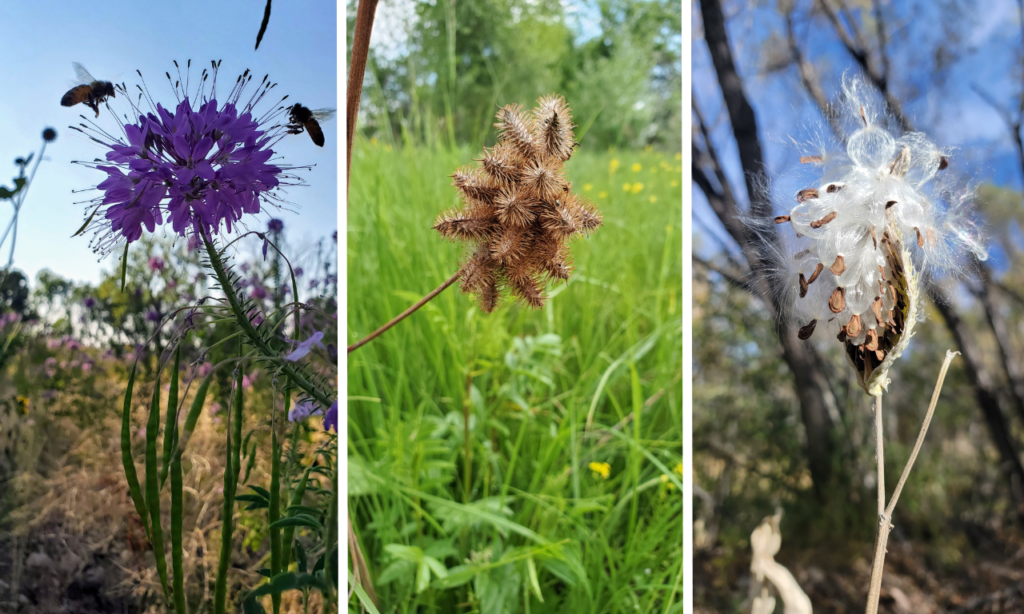Scientists use several technical names — pods, capsules, drupes, and such — to describe nature’s astonishing array of seed containers (fruits). But no matter their shape or how they split open to spread their contents, all these vessels serve a single purpose: to safely house and later disperse seeds to grow next season’s wildflowers.
Think about the fruits in your kitchen. They all come with seeds: the row of green peas in their pod, the cluster of black pips in an apple, the huge “stones” in peaches or avocados, the tiny pits of cherries, and even the external seeds on strawberries. Perhaps that’s a handy way of separating fruits from veggies. If it has seeds, it must be a fruit. Think cucumber, pumpkin, acorn squash, tomato — you get the drift.
Fruits in the wild are equally worth scrutiny, not with an eye to eating them, but to figuring out how they function. Once the flowers have faded away, there’s another world of plant beauty and intrigue awaiting. Fall and winter are an ideal time to have a closer look.
Milkweeds thrive in wetlands. Many insects depend on them for survival, including the increasingly rare Monarch butterfly. The globular pink flowers of showy milkweed give way to bumpy, croissant shaped pods which, when ripe, crack along one side to release a mass of parachute-borne seeds. The wonder is how so many seeds can fit in the pod. The swamp milkweed has longer, thinner, dangling pods that develop from the cluster of dark pink flowers. Both plants rely on wind to disperse their seeds.
Dogbane has paired pods, typically joined at the base, which dry and split along two sides to release seeds in the wind. The hanging pods of Rocky Mountain bee plant split to release a row of pea-like seeds. Try to guess how the seeds are flung out to germinate away from the parent plant.
There are lots of ways that seeds disperse, some are extremely tricky. Wild licorice fruits stick to passing humans and animals, traveling to who knows where, until the seeds find fertile ground. Think of this plant as using nature’s Velcro.
The fruits of prickly pear are juicy enough (despite the plant’s protective spines) to tempt animals to bite into them and release the copious seeds, often far away from the parent plant. If you are a small mammal, it makes sense to scurry away to eat your meal in safety!
Yucca fruits split along four seams to reveal rows of angular black seeds inside. Some are partially eaten by moths, the crucial pollinators that ensure the yucca’s survival. The rest? Perhaps the plants’ stiff stems act like giant pepper-pods as they shake in the breeze or are bumped by passing animals. What do you think?
Stork’s bill, or filaree, is easily overlookable (except by wildflower enthusiasts) with its low-to-the-ground form and miniscule pink flowers. The fruits that follow become dry enough to coil and explosively fling seeds into — one hopes — fertile ground. It might seem hit and miss, but the mechanism worked well enough to spread this non-native into deserts and grasslands. Look for it along any trails at almost any time of year.
These are a few of the perfect pods and spectacular seeds you might find on autumn and winter walks when the bright wildflowers have long gone. They are all worth more than a passing glance!

